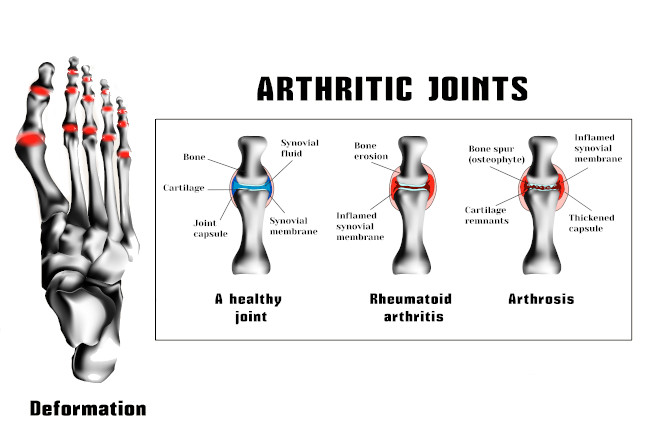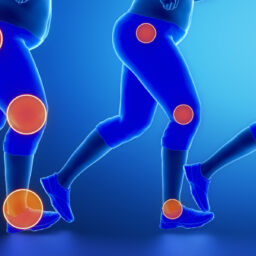
What are the places in the body that come to mind when you hear the word arthritis?
Most people would probably think of the hands or the hips or the knees. But one of the most common sites that arthritic pain occurs is in the feet. Now before we tell you more about this problem and what the doctors at Certified Foot and Ankle can do to help treat it, we need to first clarify what arthritis really is. The word comes into the English language from the Greek roots “arthro-” for joint and “-itis” for inflammation. A joint is a structure situated where two or more bones meet. The bones are held together by bands of tough tissue called ligaments that allow for a certain amount of motion to occur between the bones. Although bone surfaces are relatively hard, where they meet other bones they are covered with softer substances (cartilage usually) that prevent direct bone on bone contact and that act as natural shock absorbers. The cartilage is bathed in a special fluid that acts as a lubricant and contributes to the smooth motion of the joint. In a perfect world this arrangement would last a lifetime. Arthritis is a broad term for many conditions that can disrupt the natural joint structure and cause pain, swelling, and stiffness. This is what is defined as foot arthritis pain.
There are three major types of FOOT arthritis PAIN:
- Degenerative (known as osteoarthritis or OA)
- Inflammatory (the most common of which is rheumatoid arthritis or RA)
- Metabolic (the most common of which is gout)

All three major types can occur in the feet. OA is found in areas that bear a lot of weight or have had a significant trauma. For example if you have broken your ankle in the past you are more likely to develop OA there in the future. Thus, OA is also known as “wear and tear” arthritis. Foot OA can often be found at the midfoot (at the highest part of the arch) or at the base of the great toe. RA is caused by an autoimmune disorder. Basically the immune system mistakenly attacks one or more of our own joints. In the foot RA is typically seen in the joints at the bases of all the toes and can be associated with severe deformities like large bunions (boney prominences on the inner side of the forefoot) and rigidly bent toes (known as hammer toes). Not only are those sites painful but the deformities make finding well-fitting shoes very difficult. Gout is caused by a build up of uric acid, a chemical produced when the body naturally processes (metabolizes) some types of proteins (called purines) or nucleic acids (like DNA or RNA) that we have in our blood. There are several reasons that uric acid can build up in the blood stream including overeating certain foods (most notably red meats and shellfish), alcohol consumption, and kidney disorders. In the colder parts of the body (especially the feet) uric acid in the joint area can solidify. Our immune system may respond to the presence of uric acid in an abnormal state and initiate a painful attack with the joint architecture becoming collateral damage. Gout in the foot is most likely to occur at the great toe base but can also be seen in the smaller toes.
Much research has been conducted to determine effective treatments for these different maladies and this has led to the development of a number of new and effective modalities. Fortunately we at Certified Foot and Ankle have access to several of these at our offices to help treat your foot arthritis pain. Options available range from more conservative treatment measures such as pressure-reducing custom orthoses to the administration of stem cell laden therapies that promote the growth of new cartilage. In refractory cases surgical procedures that remove damaged joints and replace them with synthetic substitutes are available.
If you have been frustrated by pain, swelling or stiffness in your feet this may be due to an arthritic problem. Because of these recent advances “living with” arthritis is no longer the only option you have.
By Dr. John Hurchik, DPM
Certified Foot and Ankle Specialist – Brandon | Fort Myers, Florida
